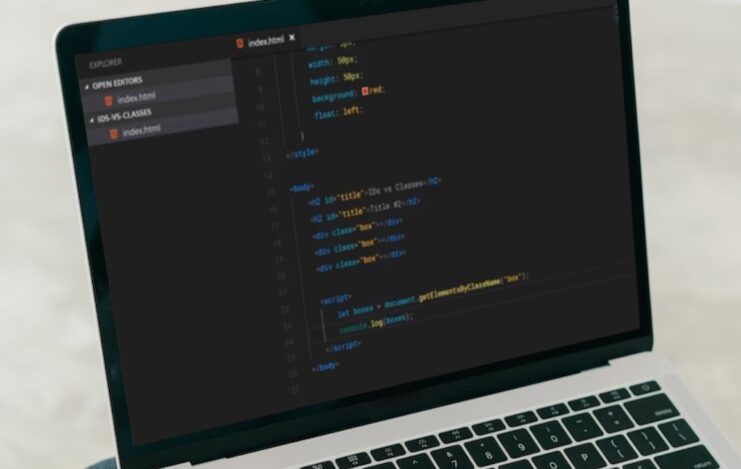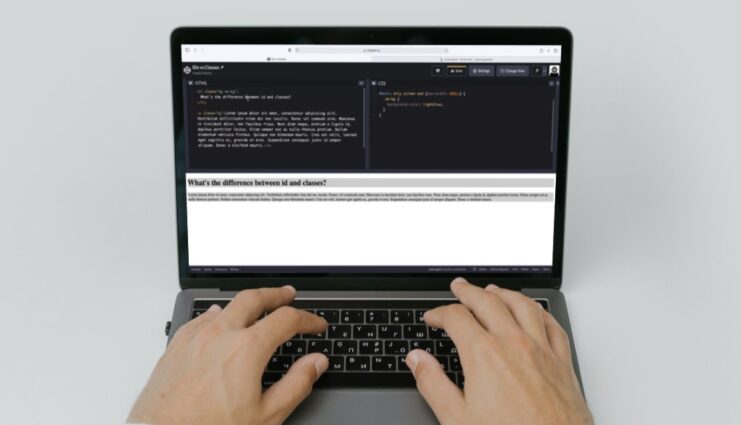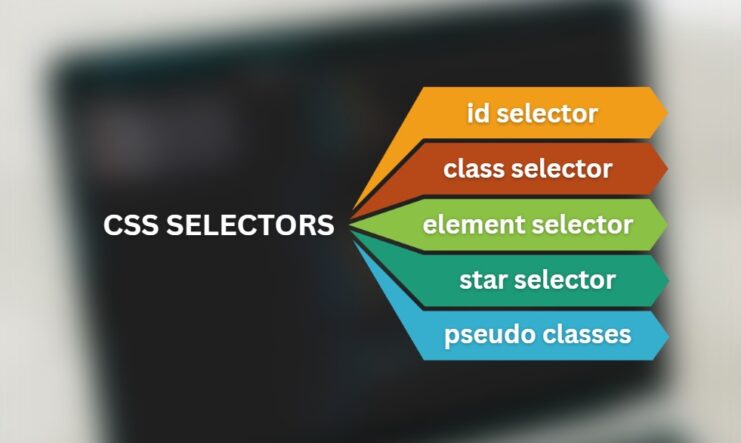Two of the most commonly used selector types are multiple class / ID selectors and class selectors. To ensure consistency in website design, it’s important to have a unified style throughout the entire page.
However, achieving this can be a daunting task for web developers, as going through each element to ensure that they conform to the correct form can be time-consuming and tedious.
Thankfully, there is a solution to this problem: CSS selectors. By using selectors, developers can identify and group elements together, allowing them to share design elements and simplify the coding process.
Among the five categories of selectors available, this article focuses on the simple selectors: ID and class selectors. While IDs and classes can be tricky to work with at first, once you get the hang of using them, they can make your code cleaner and easier to structure.
With the help of these signifiers, web developers can easily block and style elements as needed, avoiding inconsistencies and creating a more cohesive design across the entire website.
But before you jump right into this article, elevate your web design abilities by exploring our comprehensive guide on disabling links using only CSS, a clever technique to effectively manage link functionality while maintaining a clean and user-friendly interface.
What Is ID?

In HTML and CSS, an ID is a unique identifier that allows developers to apply specific styles to a single element on a webpage. Unlike classes, which can be applied to multiple elements, each element can only have one ID and each page can only have one element with that specific ID.
For instance, if we have five divs in our HTML, we can assign each of them the same ID and style them with the same properties, such as making them green and 60 pixels tall.
To identify an ID in CSS, we use the hash character (#) followed by the ID name.
div{
background-color: #008000;
height: 60px;
}
What Is Class?

In CSS, classes are a useful tool for applying the same styles to multiple elements throughout a webpage or website.
Unlike IDs, classes are not unique to a single element and can be assigned to multiple elements. Additionally, while an element can only have one ID, it can have multiple classes.
To identify a class in CSS, we use a period (.) followed by the class name. For example, if we want all elements with the class “center” to be centered and green, we can apply the necessary styles to that class in our CSS file or within the HTML document.
text-align: center;
color: green;
}
What’s the Difference Between ID vs. Class?
When it comes to using classes and IDs in CSS, it can be difficult to determine when to use each selector, as they both accomplish similar tasks.
However, the difference lies in the scale and execution of the action, and with practice, developers can gain a better understanding of when to use each one.
To better understand the difference between IDs and classes, we can use the analogy of barcodes and serial numbers. Just like all products in an electronics store have a barcode and a unique serial number, all elements on a webpage can have both an ID and a class.
The barcode, like an ID, provides specific information about a product or element, but it doesn’t differentiate one from another. On the other hand, a serial number, like a class, is unique to a specific product or element and can identify it even without providing specific information.
In practice, it’s common for a single element to have both an ID and one or more classes associated with it, allowing developers to apply specific styles and attributes to that element as needed.
Which Should You Choose?

When it comes to using IDs and classes in CSS, it can be challenging to know when to use each one correctly. While using either one won’t necessarily be incorrect, identifying the proper signifier for each element will lead to cleaner code that is easier to work with in the long run.
Regardless of whether you choose to use an ID or a class, it’s important to clearly identify the elements you are referencing.
What may make sense to you initially could become less clear after some time away from the code. By carefully selecting and labeling your elements, you can ensure that your code is easy to read, understand, and modify as needed.
Improve your web design efficiency and ensure a smoother user experience by mastering the art of identifying CSS properties that won’t trigger layouts, a crucial skill that will optimize your website’s performance and responsiveness.
FAQs
1. Is ID Stronger Than Class CSS?
In CSS, IDs are not necessarily “stronger” than classes, but they have a higher specificity value.
This means that an ID selector will have a higher priority over a class selector when both are applied to the same element.
For example, if we have a CSS rule for a div element with an ID of “example” and a class of “highlight”, and both the ID and class have conflicting styles, the style defined in the ID selector will take precedence over the style defined in the class selector.
However, it’s important to note that using IDs excessively in CSS can make the code more difficult to maintain and modify, as IDs are unique to a single element and cannot be reused throughout the page or website.
It’s generally best to use IDs sparingly and reserve them for unique elements that require specific styling while using classes for more general styling that can be applied to multiple elements.
The final order is:
- Values defined as important
- Inline styles
- ID selectors
- Class selectors
- Element
2. Difference between ID and CLASS in HTML?
| Key | ID | Class |
|---|---|---|
| Syntax | Starts with “#” symbol followed by a unique name assigned | Starts with “.” symbol followed by a class name |
| Selector | Only one ID selector can be attached to an element | Multiple class selectors can be attached to an element |
| Uniqueness | Unique in a page and can only apply to at most one element | Can be applied to multiple elements on a single page |
3. Is ID Faster Than Class CSS?
There is no significant difference in speed between using IDs and classes in CSS. While IDs have a higher specificity value and may be processed faster by the browser, the difference in performance is negligible and not noticeable in most cases.
In general, the performance of CSS depends more on the complexity and size of the code, as well as the number of elements being styled. It’s important to write clean and efficient CSS code that is optimized for performance, rather than relying on a specific selector like ID or class to improve speed.
4. Can You Use Class and ID Together?
Yes, it is possible to use both class and ID together on the same HTML element. An element can have both a class and an ID assigned to it to provide more specific styling. For example, an element could have a class assigned to it for a general styling, such as a font family, and an ID assigned to it for a specific styling, such as a different font size or color.
However, it’s important to remember that an ID can only be assigned to one element on a page, while a class can be assigned to multiple elements. Therefore, it’s best to use IDs sparingly for unique and specific elements, and use classes for more general styling that can be applied to multiple elements.
Conclusion
Understanding the differences between ID and class selectors is crucial when styling web pages with CSS. While both serve similar purposes, they should be used appropriately to ensure proper styling and functionality of your website.
Remember that IDs are unique and should be used sparingly, while classes can be applied to multiple elements and are ideal for general styling.
With this knowledge, you can effectively use multiple class and ID selectors to make your website stand out.

